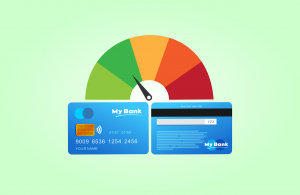Precious metal prices are subject to many fluctuations, making it a challenge for investors and collectors alike to stay on top of the market. With so much variety in pricing and demand, understanding precious metal price fluctuations can be tricky. To ensure you’re getting the most out of your investments or collections, taking some time to understand the factors that influence precious metals is key. In this article we will explore what causes these changes in value, how to analyze them correctly, and ways to use this knowledge to make better decisions when trading with precious metals.
The first step in understanding why precious metals fluctuate in price is recognizing the various sources of supply and demand influencing their values. Supply often comes from mining companies around the world while consumer trends drive up demand as they purchase jewelry or collectables made from these materials. Other drivers include economic conditions such as inflation or currency exchange rates which also impact metal prices significantly.
In addition to external forces affecting metal prices there are also internal ones at play. Certain production costs like extraction fees or refining expenses must be taken into account when evaluating a given commodity’s worth. Certain events such as political unrest or natural disasters may cause disruption within the marketplace leading to additional volatility in pricing. By keeping an eye on both external and internal factors related to any type of asset, one can begin to build more predictive models for assessing its future performance – something essential if you want success when dealing with valuable commodities!
Factors Affecting Prices
The price of precious metals fluctuates, and there are a variety of factors that can affect how prices move. Demand is the most obvious factor, as when demand increases for gold or silver, the prices will go up accordingly. Supply also plays an important role in pricing: if supplies remain scarce relative to demand then prices may rise since it’s difficult to obtain the metal at a reasonable cost. Other external influences such as geopolitical tensions, economic uncertainty, currency fluctuations, market sentiment and investor confidence can all have an impact on prices too.
Inflation has been cited as another potential driver of higher precious metal prices over time. When inflation rises, people tend to look for ways to protect their wealth by investing in assets that hold their value better than traditional currencies like US dollars or euros; this often leads them to buy gold or other precious metals because they usually perform well during periods of high inflation or economic distress. Additionally, investors may choose these metals as hedges against risk since they typically don’t experience large swings in price when markets become volatile.
Historical Performance Of Precious Metals
Precious metals have been a symbol of wealth and store of value for thousands of years. Historically, gold and silver prices have fluctuated significantly around the world over time in response to changing economic conditions. In some cases, precious metal prices are determined by supply and demand forces, while other times they serve as a safe-haven asset class that investors turn to during periods of uncertainty or financial crisis.
The historical performance of gold and silver has varied dramatically throughout history. During ancient civilizations, gold was seen as a form of currency and its price recorded relative to other goods such as food or livestock. As more nations began using paper money backed by gold reserves, the relationship between gold’s price and the strength of their respective currencies became stronger. This correlation continues today with many countries still maintaining a portion of their foreign reserve holdings in gold bullion. Silver historically served primarily as an industrial commodity used for everyday items like coins or jewelry but it also maintained its role as a store of value because its uses were so abundant across multiple industries during the 19th century Industrial Revolution period when mining production increased greatly.
In modern markets, both gold and silver prices continue to be heavily influenced by global market movements and macroeconomic trends including US dollar valuations, inflationary pressures from central banks, geopolitical tensions worldwide, interest rate levels set by governments etc.. These factors all play a part in determining how much people are willing to pay for precious metals at any given moment which can cause large swings in price on even short notice. Investors should keep this in mind when making decisions about adding these assets into their portfolio since timing is crucial when attempting to capitalize on potential gains or protect against losses due to sudden changes in pricing dynamics.
Analyzing Market Trends
The precious metal market is a complex and ever-changing entity. Understanding trends can help investors make the most of their investments and increase profits. To analyze these trends, it’s important to look at both short-term and long-term data points.
In the short term, gold prices tend to be driven by macroeconomic forces like currency exchange rates, inflation, interest rates, geopolitical events, or even natural disasters. For example, when currencies weaken due to economic uncertainty or political unrest in certain parts of the world, people flock towards buying gold as a safe haven asset. The influx of buyers results in an upward trend in gold prices—and vice versa if conditions improve and demand decreases. Meanwhile, other factors that affect shorter-term price movements include supply levels (such as new mines entering production) and speculative trading activity.
When looking at longer-term trends over several years or decades, many analysts focus on historical cycles such as bull markets (periods of sustained uptrends) or bear markets (periods of downward pressure). Here too economists pay attention to fundamental indicators like GDP growth or government policies since they tend to influence investor sentiment around gold as well as overall risk appetite across financial assets classed together with precious metals like silver and platinum for comparative purposes. Moreover, there are also demographic considerations – for instance millennials have been reported to invest more heavily into physical holdings than previous generations which could lead to further upside potential down the line depending on how this group behaves collectively going forward!
Determining Investment Strategies
Investing in the top precious metal IRA companies can be a great way to diversify your portfolio and take advantage of the potential for price fluctuations. When it comes to determining investment strategies, there are several important factors to consider.
*The first is identifying the type of metal you want to invest in: gold, silver, platinum or palladium. Each has its own unique properties that make them attractive investments. Gold is often seen as a safe haven asset due to its long-term stability, while silver offers greater liquidity than other metals. Platinum and palladium are also sought after for their industrial uses, making them potentially more volatile investments than gold and silver.
*Second is understanding supply and demand dynamics. Precious metals prices depend on many different economic forces, including production levels from mines, central bank policies, currency movements and geopolitical tensions. Investors should look at both short-term supply and demand trends as well as longer-term influences when selecting an investment strategy.
*Third is deciding what kind of exposure you want in terms of ownership rights over physical assets versus derivatives such as futures contracts or exchange traded funds (ETFs). Owning physical assets gives investors direct control but involves storage costs; whereas trading derivatives allows investors to gain exposure without having to physically store the metal itself. It’s important to weigh up these options carefully before investing so that you understand how they could affect your returns over time.
Finally, careful consideration must be given to risk management measures such as stop losses and hedging techniques like spreads or straddles which allow investors to protect against downside risks while still benefiting from potential upside opportunities in the market. By taking the time to research each factor thoroughly before investing in precious metals, investors can ensure they have chosen an effective strategy tailored specifically to their needs.
Conclusion
It is important to understand the factors that affect precious metal prices and the historical performance of these metals. Through analysis of market trends, investors can formulate investment strategies for their portfolios.
When it comes to investing in precious metals, knowledge truly is power; understanding how supply and demand affects pricing is a great way to make educated decisions when it comes to your investments. While fluctuations are part of any investment, you should always be aware of what could potentially cause price movements, both positive and negative. Market sentiment matters too – just like a drop of rain causes ripples across a pond, news or economic events can also have an effect on prices. To use an adage: ‘A stitch in time saves nine.’ In other words, if you keep track of what’s happening with prices over time, you’ll be better prepared to adjust your strategy accordingly when necessary.
In conclusion, taking into account all relevant factors before making decisions regarding investments in precious metals will help create more certainty with regards to returns and minimize risk exposure as much as possible. With diligence and careful planning, investors may find they are able to gain greater financial security from investing in gold and silver markets than from traditional asset classes such as stocks or bonds.…




